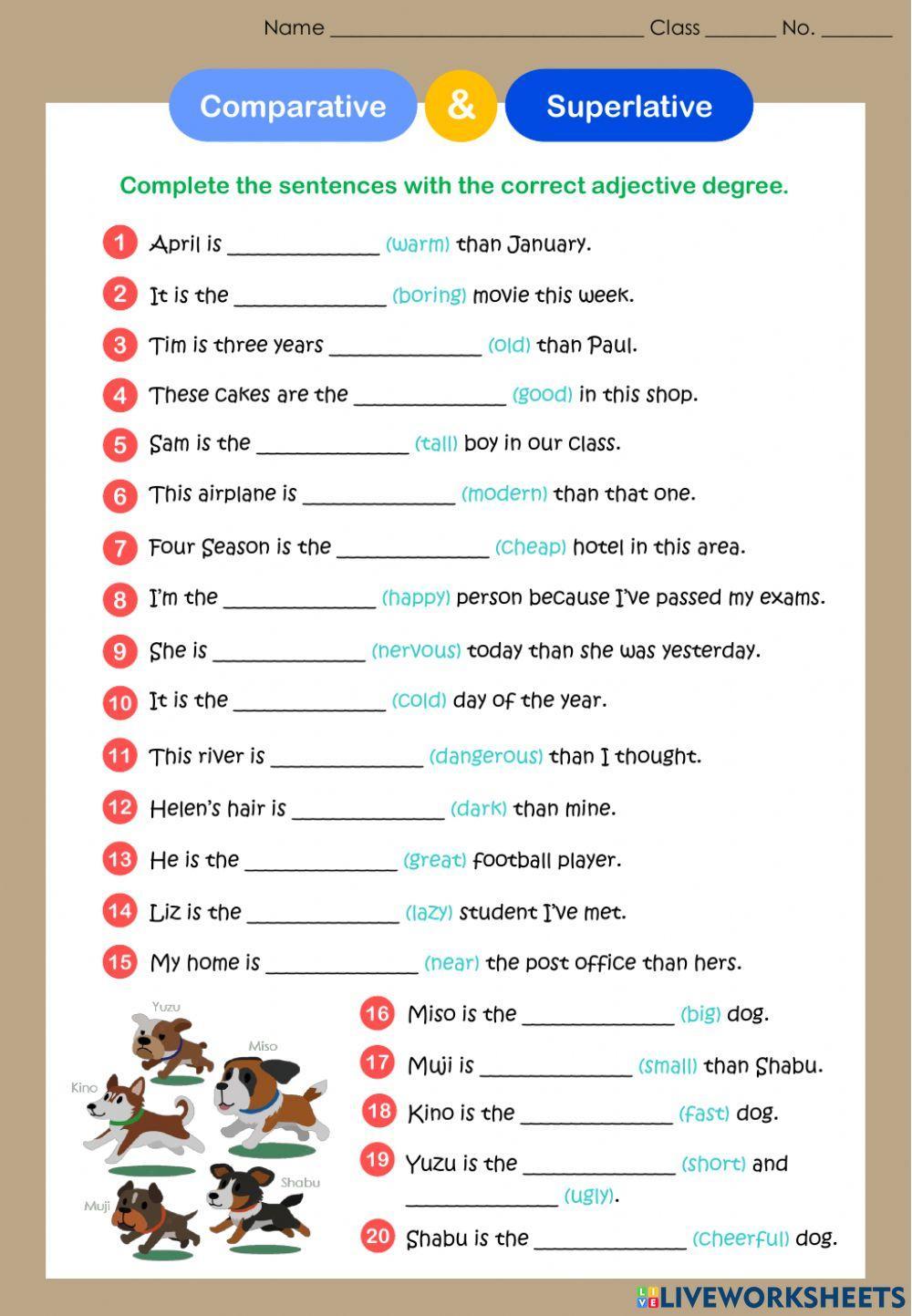Loading ad...
Age: 11-18
Level: Grade 8
Language: English
(en)
ID: 2116076
14/08/2022
Country code: TH
Country: Thailand
Main content: Comparatives and superlatives (2013172)
From worksheet author:
Using the comparative and superlative Adjectives
Other contents:
Adjectives
Share / Print Worksheet
